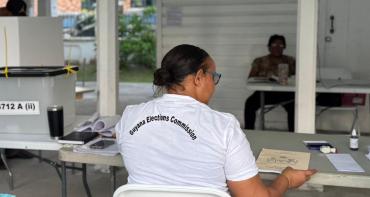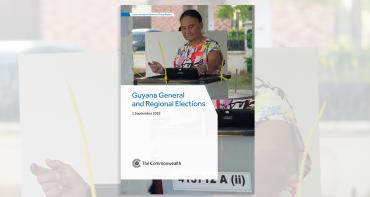The beauty of the majestic Piton mountains, vibrant culture, dazzling beaches and the lush landscape of Saint Lucia are invaluable assets. The country also takes pride in having two Nobel laureates, which is remarkable for a nation with a population of over 180,000.

However, as is true for many other small island developing states (SIDS) in the Caribbean, the picture of economic stability is not as rosy.
In 2020, the country’s public debt-to-GDP ratio was over 90%, due in part to the deleterious effects of the coronavirus pandemic, and by 2024, this ratio was reduced to 74.5%. This dramatic reduction has freed up funds which can now be invested in projects that spur growth and enrich the lives of Saint Lucians.
Strong recovery is on the horizon
For Saint Lucia, prudent debt management is proving to be a powerful catalyst for growth and shared prosperity. The government is taking even bolder steps for fiscal stability, with technical support from the Commonwealth Secretariat.
In March 2024, the Commonwealth Secretariat and the Ministry of Finance collaborated to develop a reform plan for the country, which started with a rigorous and comprehensive review of the public borrowing framework.
Vera John-Emmanuel, Deputy Director of Finance in the Debt and Investment Management Unit in Saint Lucia’s Ministry of Finance, said:
“The assessment helped pinpoint systemic strengths and weaknesses ranging from legislative gaps to coordination issues between debt management functions.”
Modernising for sustainable growth
Technology has also played a pivotal role in modernising Saint Lucia’s debt management practices with the adoption of the Commonwealth Meridian system. Launched in 2019, the Commonwealth Meridian debt management system is currently being used by 43 countries around the world.
John-Emmanuel said:
“Meridian allows for real-time tracking of borrowing, automated reporting, and better analysis of liabilities. These upgrades have helped integrate technology into the core of Saint Lucia’s debt operations, improving both strategic planning and investor communications.”
Leveraging best practices from the Commonwealth
To mark 40 years of debt management support for member countries, this year is being marked as the Commonwealth Year of Resilient, Innovative and Sustainable Debt. Initiatives, which will continue into 2026, will include sharing experiences and enhancing technical and policy solutions and support that can help governments with long-term public debt management, which will contribute to fiscal sustainability.
Dr Ruth Kattumuri, the Commonwealth Secretariat’s Senior Director of the Economic Development, Trade and Investment Directorate, noted:
“The challenges for small and vulnerable states in the Commonwealth are multi-faceted. They face existential threats from frequent and extreme weather events, due to climate change, as well as economic shocks – both of which impede progress.”
Strong partnerships for Caribbean growth
Saint Lucia’s story is not unique. Other Caribbean countries, such as The Bahamas, are also advancing sustainable debt management practices in the region.
Since 2021, The Bahamas has partnered with the Commonwealth Secretariat to strengthen its public debt management framework and develop a government bond market, a project which has been supported by the India–UN Development Partnership Fund.
The experience of these Caribbean countries demonstrates that, with the right combination of thoughtful reforms, cooperation and prudent borrowing, even nations facing unique fiscal, geographic and environmental vulnerabilities can successfully manage their debt.
This article was originally published by IPS (Inter Press Service) on August 5, 2025, under the title “How One Caribbean Country Is Changing the Face of Debt.”
Media contact
-
Snober Abbasi, Senior Communications Officer, Communications Division, Commonwealth Secretariat



